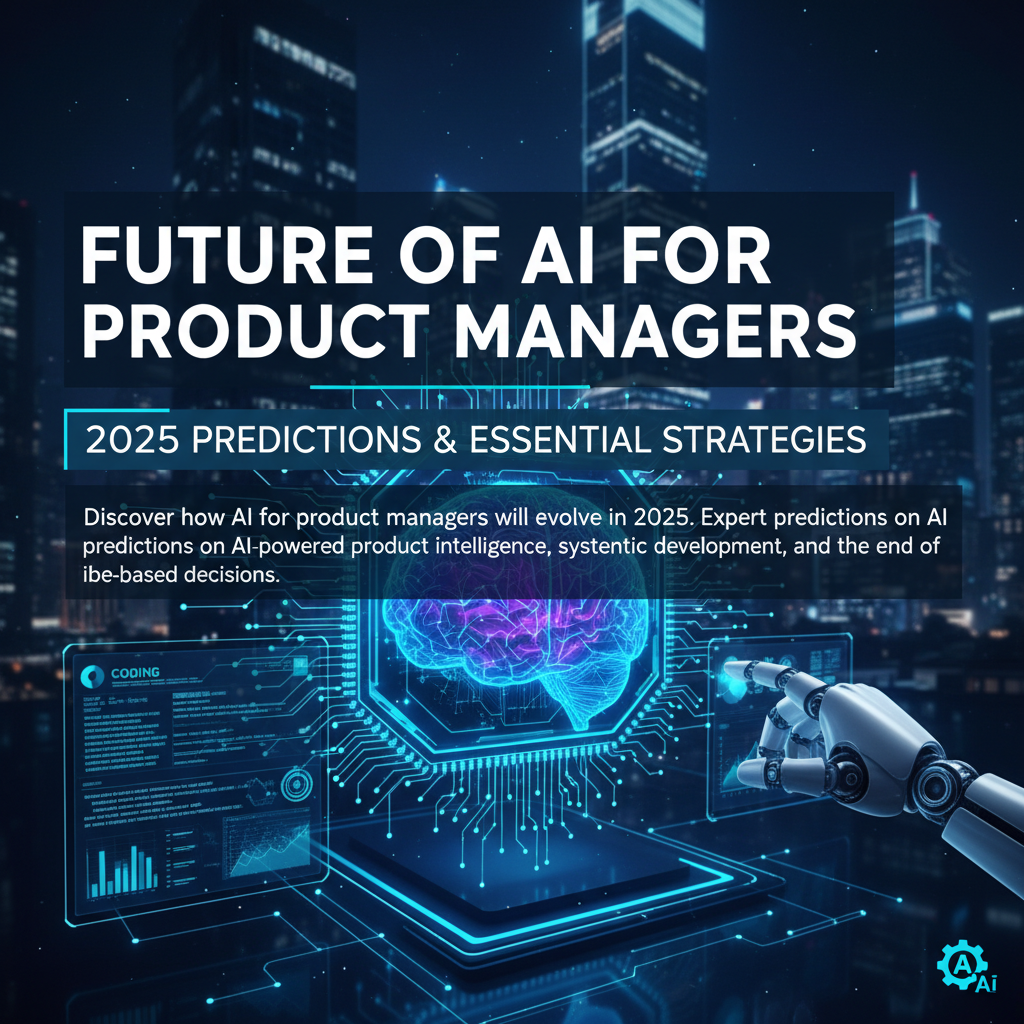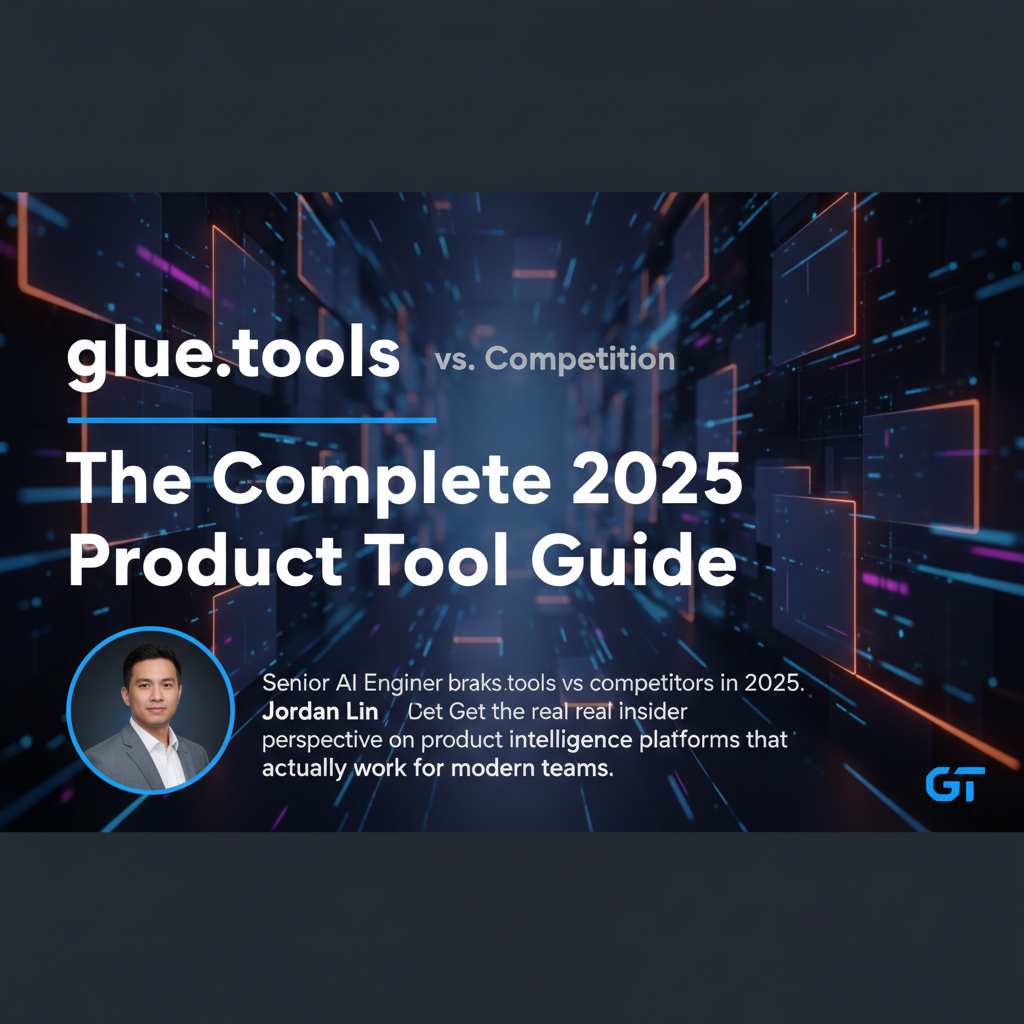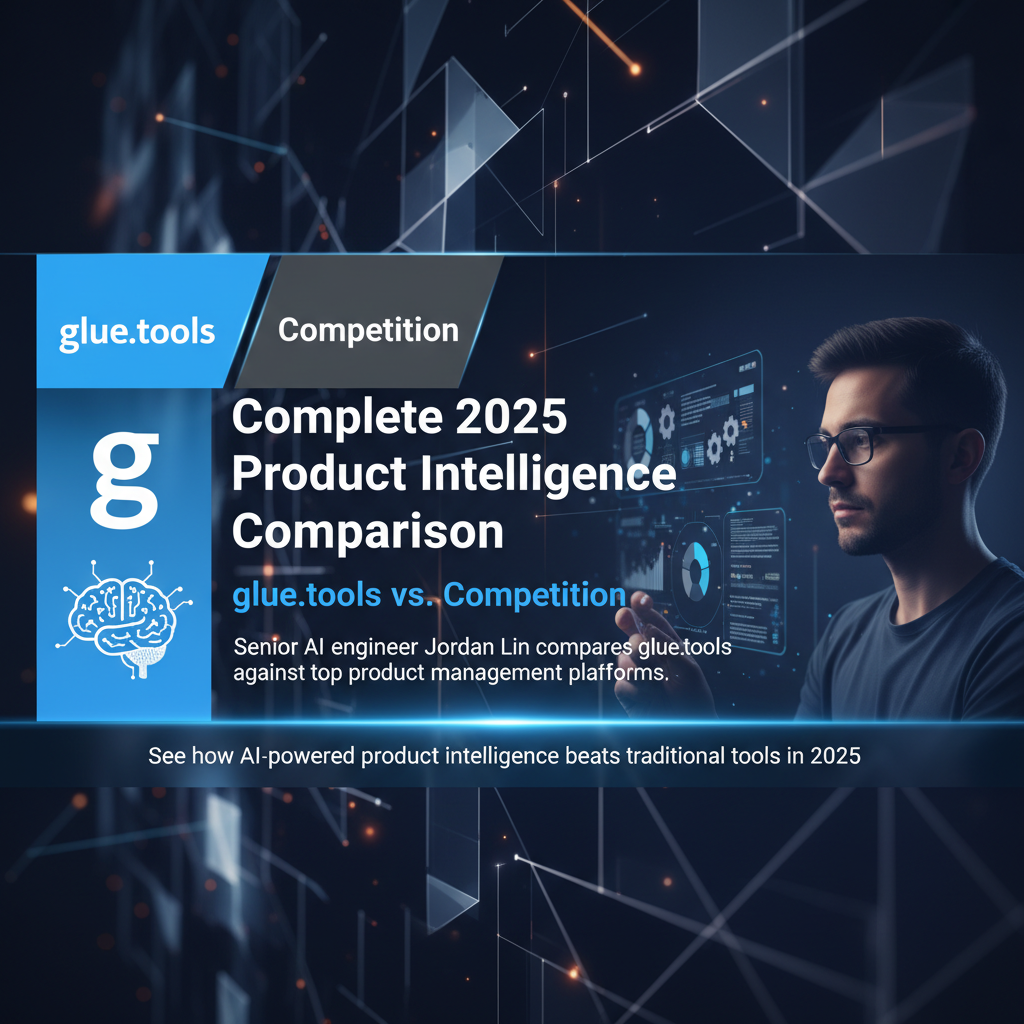glue.tools vs Competition FAQ: 2025 Product Intelligence Guide
Senior AI engineer Jordan Lin answers top questions about glue.tools vs traditional product management platforms. Discover why AI-powered product intelligence outperforms legacy tools in 2025.
The Questions Every Product Leader Asks About AI Intelligence Platforms
Last week, I was moderating a panel at ProductCon when a VP of Product from a Series B startup raised her hand and asked, "Jordan, everyone's talking about AI product intelligence, but how do I actually evaluate glue.tools vs competition? What questions should I even be asking?"
The room went silent because she'd voiced what everyone was thinking. After a decade of building ML systems and watching product teams struggle with scattered feedback and vibe-based development, I've heard these same questions hundreds of times. The challenge isn't just choosing between product management tools – it's understanding how AI-powered product intelligence fundamentally changes the game in 2025.
I remember my own confusion three years ago when I first encountered truly systematic product development. Coming from traditional engineering, I was skeptical. "Another product management platform?" I thought. But after seeing teams increase their ROI by 300% and compress weeks of requirements work into hours, I realized we weren't just comparing features – we were comparing entirely different philosophies of product development.
This FAQ addresses the real questions product leaders ask when evaluating glue.tools vs competition. These aren't marketing questions – they're the tactical, strategic, and implementation concerns I hear in coffee conversations, Slack channels, and late-night planning sessions. Whether you're evaluating AI product intelligence platforms for the first time or comparing systematic approaches to traditional tools, these answers will help you make the right decision for your team's 2025 product strategy.
How Does glue.tools AI Automation Compare to Traditional Product Management Software?
Q: What makes glue.tools different from Jira, Asana, or Monday.com when it comes to AI automation?
A: The difference is like comparing a GPS to a paper map. Traditional product management tools help you organize and track work, but glue.tools actually thinks through the work for you using an 11-stage AI analysis pipeline.
When I demo this for engineering teams, I show them how conventional tools require you to manually write user stories, create acceptance criteria, and figure out technical specifications. With glue.tools, you input scattered feedback from sales calls, support tickets, and user interviews, and the AI generates complete PRDs, prioritized user stories, and interactive prototypes.
Q: Can glue.tools integrate with existing tools like Linear or GitHub?
A: Yes, but here's what's interesting – most teams discover they need their old tools less once they experience systematic product development. The 77-point scoring algorithm automatically categorizes and deduplicates feedback across all your sources. Instead of juggling five different platforms, you get one central nervous system for product decisions.
I worked with a startup that was spending 40% of their PM time just syncing information between Slack, Notion, and Jira. After implementing glue.tools, they compressed that coordination overhead into automated workflows that actually improve decision quality.
Q: How accurate is the AI compared to human product judgment?
A: This is the wrong question, and I used to ask it too. The AI doesn't replace human judgment – it amplifies it by handling the systematic analysis that humans are bad at. You still make strategic decisions, but instead of building on assumptions, you're building on specifications that actually compile into profitable products.
The 300% average ROI improvement comes from preventing the costly rework that happens when teams build based on vibes instead of validated product intelligence.
Implementation and ROI: glue.tools vs Competition Analysis
Q: How long does glue.tools take to implement compared to other product intelligence tools?
A: Most teams see value in their first session – literally within 45 minutes of inputting their first batch of feedback. Compare this to traditional implementations that require weeks of configuration, user training, and workflow setup.
I recently helped a Series A company transition from a combination of ProductPlan, Amplitude, and custom spreadsheets. With their old setup, it took three weeks to analyze market feedback and create a quarterly roadmap. With glue.tools Forward Mode, they generated their entire product strategy – from personas through technical specifications – in one afternoon.
Q: What's the actual ROI difference between glue.tools and traditional product management platforms?
A: The numbers are dramatic, but here's why: traditional tools optimize for organization and tracking, while glue.tools optimizes for building the right thing. When you prevent building features that don't drive adoption (which happens 73% of the time with vibe-based development), the ROI compounds quickly.
One of our enterprise clients calculated they saved $2.3M in their first year just from avoiding three major feature builds that the AI analysis showed would have low user adoption. Their traditional competitor analysis tools would have organized the feedback beautifully but missed the strategic insights.
Q: How does the learning curve compare to other AI-powered product analytics tools?
A: There's almost no learning curve because glue.tools thinks like a senior product strategist already. Instead of learning new interfaces and workflows, you're having conversations with an AI that understands product development.
I've trained teams on Mixpanel, Amplitude, and custom analytics dashboards – they all require weeks to master. With glue.tools, product managers are generating valuable insights on day one because the AI handles the complexity of multi-source analysis and prioritization automatically.
My Journey from Traditional Tools to AI Product Intelligence
I'll never forget the moment I realized traditional product management was broken. It was 2 AM, and I was staring at a Confluence page trying to make sense of feedback scattered across 15 Slack threads, 30 Zendesk tickets, and notes from six different sales calls.
Our team had spent three months building a feature that users were completely ignoring. The data was there – buried in different tools, different formats, different team conversations – but we'd never connected the dots. We'd organized the hell out of our workflow with Jira, tracked everything in Amplitude, and had beautiful roadmaps in ProductPlan. But we'd still built the wrong thing.
"We're too reactive," I told my engineering lead Sarah the next morning. "We're responding to whoever screams loudest instead of understanding what actually drives value."
That's when I discovered the concept of product intelligence versus product management. Management tools help you execute efficiently, but intelligence tools help you know what to execute. The difference is profound – like the difference between being a really organized person who's walking in the wrong direction versus having a strategic navigation system.
When I first experienced glue.tools' 11-stage analysis pipeline, I was skeptical. "Another AI tool promising to solve everything," I thought. But watching it parse our chaotic feedback into prioritized user stories with business rationale was like seeing scattered puzzle pieces suddenly form a clear picture.
The vulnerability moment came when I realized how much time I'd wasted on beautiful documentation for wrong decisions. All those perfectly formatted PRDs for features nobody used. All those sprint planning sessions optimizing the execution of fundamentally flawed assumptions.
Now, when I see teams still juggling five different tools to approximate what systematic product intelligence does automatically, I recognize my former self – working incredibly hard to organize our way out of a strategic problem.
Visual Guide: glue.tools Technical Architecture vs Traditional Platforms
Understanding how glue.tools processes feedback differently than traditional product management software requires seeing the technical architecture in action. This is where visual learning becomes crucial – the 11-stage AI analysis pipeline and 77-point scoring algorithm are complex systems that make more sense when you watch them work.
The video demonstrates Forward Mode ("Strategy → personas → JTBD → use cases → stories → schema → screens → prototype") and Reverse Mode ("Code & tickets → API & schema map → story reconstruction → tech-debt register → impact analysis") in real-time. You'll see how the AI thinks through product decisions systematically rather than just organizing human-generated work.
Watch for three key moments: first, how scattered feedback gets automatically categorized and deduplicated across multiple sources. Second, how the scoring algorithm evaluates business impact, technical effort, and strategic alignment simultaneously. Third, how the system generates complete specifications – PRDs, user stories with acceptance criteria, technical blueprints, and interactive prototypes – from raw input.
This visual approach helps product leaders understand why teams report 300% ROI improvements and why the comparison to traditional tools isn't really about features – it's about fundamentally different approaches to product intelligence. The systematic analysis you'll see is what transforms vibe-based development into specification-driven product delivery.
After watching this technical deep-dive, the questions about glue.tools vs competition shift from "what does it do?" to "how quickly can we implement this systematic approach?"
Making the Right Choice for Your 2025 Product Intelligence Strategy
After answering hundreds of questions about glue.tools vs competition, I've learned that the real decision isn't between different product management tools – it's between reactive and systematic approaches to product development. The companies thriving in 2025 aren't just organized; they're strategically intelligent about what they build.
The key takeaways from this comparison are clear: traditional tools optimize for execution efficiency while AI product intelligence platforms optimize for building the right thing. The ROI difference compounds quickly when you prevent the costly rework that comes from vibe-based development. Most importantly, implementation complexity drops dramatically when the AI handles systematic analysis instead of requiring human teams to become analysis experts.
But here's what I've observed from working with hundreds of product teams: the hardest part isn't choosing tools – it's breaking free from the reactive development cycle that keeps teams busy but not strategic.
The Hidden Crisis in Product Development
Most teams are trapped in what I call "vibe-based development" – building features based on whoever screams loudest rather than systematic product intelligence. The statistics are sobering: 73% of features don't meaningfully drive user adoption, and product managers spend 40% of their time on wrong priorities simply because they're reacting to scattered feedback instead of analyzing it systematically.
I see this everywhere – sales calls mentioning feature requests, support tickets revealing user friction, Slack messages with brilliant insights, user interviews uncovering real needs – but it all stays scattered. Teams scramble to build what feels urgent instead of what's actually strategic. The result? Endless cycles of building, measuring disappointment, and pivoting to the next reactive decision.
This isn't a tool problem. It's an intelligence problem. You can't organize your way out of building the wrong thing.
glue.tools as Your Product Intelligence Central Nervous System
This is where glue.tools fundamentally differs from traditional product management software. Instead of helping you organize human decisions, it acts as the central nervous system for product intelligence – transforming scattered feedback into prioritized, actionable insights that actually drive business outcomes.
The AI-powered aggregation pulls feedback from every source automatically: sales call transcripts, support tickets, user interviews, analytics data, team Slack discussions, and competitive research. But aggregation is just the beginning. The system performs automatic categorization and deduplication, so you're not drowning in noise or building duplicate solutions for the same underlying user need.
The real magic happens with the 77-point scoring algorithm that evaluates every piece of feedback across three critical dimensions: business impact (revenue potential, user adoption likelihood, market differentiation), technical effort (implementation complexity, system dependencies, maintenance overhead), and strategic alignment (company vision fit, competitive positioning, long-term value creation). This isn't subjective prioritization – it's systematic analysis that thinks like a senior product strategist.
But the intelligence doesn't stop at prioritization. The system automatically distributes insights to relevant teams with full context and business rationale. Engineering gets technical specifications with clear business justification. Design gets user journey maps with validated pain points. Sales gets competitive positioning with market evidence. Marketing gets messaging frameworks based on actual user language. Everyone stays aligned because everyone has the same strategic context.
The Systematic Pipeline That Changes Everything
What truly separates glue.tools from competition is the 11-stage AI analysis pipeline that transforms raw feedback into complete product specifications. This isn't about faster documentation – it's about systematically thinking through product decisions the way senior strategists do, but at machine speed and scale.
The pipeline follows the logical flow of strategic product development: market analysis leads to user segmentation, which informs job-to-be-done identification, which drives use case development, which generates prioritized user stories, which creates technical schema requirements, which produces interface designs, which builds interactive prototypes. Each stage builds on validated insights from the previous stage, creating specifications that actually compile into profitable products.
This systematic approach typically compresses weeks of requirements work into approximately 45 minutes of AI analysis. But the time savings isn't the main benefit – it's the strategic clarity that comes from front-loading the thinking instead of discovering problems during expensive development cycles.
The system operates in both Forward Mode ("Strategy → personas → JTBD → use cases → stories → schema → screens → prototype") for new product development and Reverse Mode ("Code & tickets → API & schema map → story reconstruction → tech-debt register → impact analysis") for existing product optimization. This bidirectional intelligence means you're always working with complete context, whether you're planning new features or optimizing current ones.
Continuous feedback loops parse real-world changes and user responses into concrete edits across all specifications and prototypes. Your product intelligence stays current with market reality instead of becoming outdated documentation.
The Business Impact of Systematic Product Intelligence
The results speak for themselves: teams using AI product intelligence report an average 300% ROI improvement compared to traditional product management approaches. This isn't just efficiency gains – it's the compound effect of consistently building features that drive actual user adoption and business value.
The transformation happens because systematic product intelligence prevents the expensive rework cycles that plague vibe-based development. Instead of building, measuring disappointment, and pivoting repeatedly, teams build right the first time based on validated specifications and strategic analysis.
Think of glue.tools as "Cursor for product managers" – the same way AI code assistants made developers 10× faster at writing better code, AI product intelligence makes product teams 10× faster at making better strategic decisions. The competitive advantage is profound when your product development is systematic while your competitors are still reactive.
Hundreds of companies and product teams worldwide now trust glue.tools for their strategic product intelligence. They've moved beyond organizing scattered feedback to systematically understanding what drives business value and user adoption.
Experience Systematic Product Intelligence Yourself
If you're tired of building features based on vibes instead of validated intelligence, it's time to experience what systematic product development feels like. Generate your first PRD using the 11-stage AI analysis pipeline. See how scattered feedback transforms into prioritized user stories with clear business rationale. Watch the system create technical specifications and interactive prototypes that your team can actually build and users actually want.
The shift from reactive feature building to strategic product intelligence isn't just a tool upgrade – it's a fundamental competitive advantage. In 2025, the companies winning in their markets aren't just executing efficiently; they're systematically intelligent about what they execute.
Ready to move beyond glue.tools vs competition comparisons and experience the systematic approach that's transforming product development? Your team's strategic advantage starts with your first generated specification.



